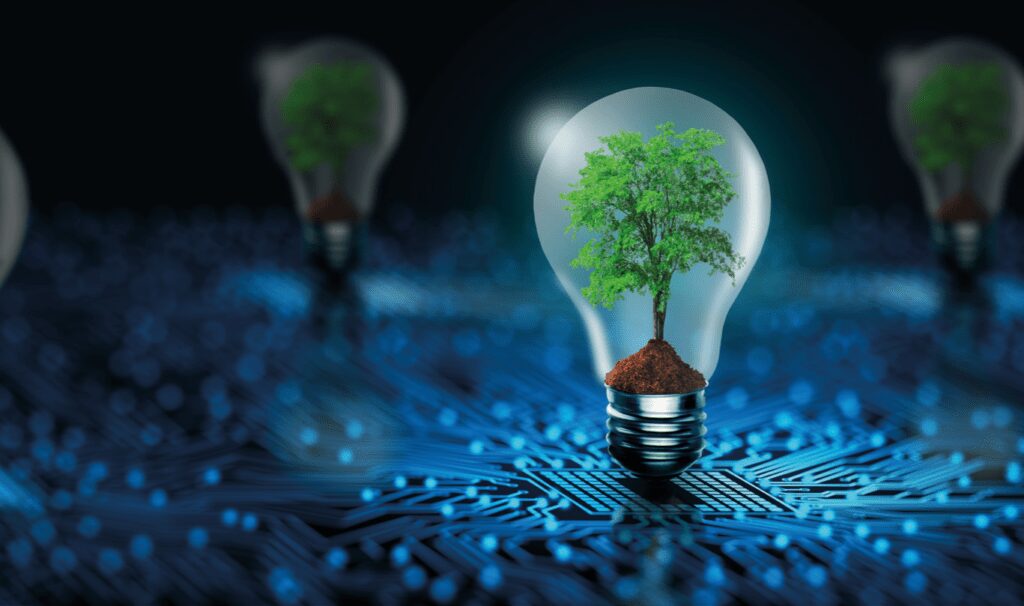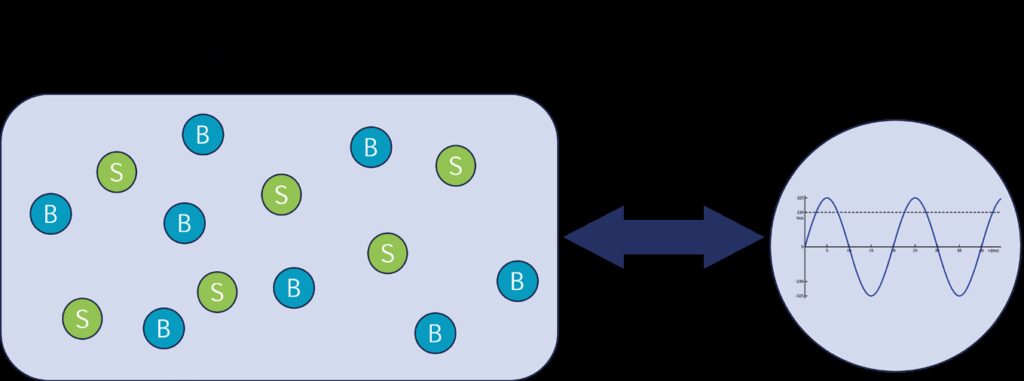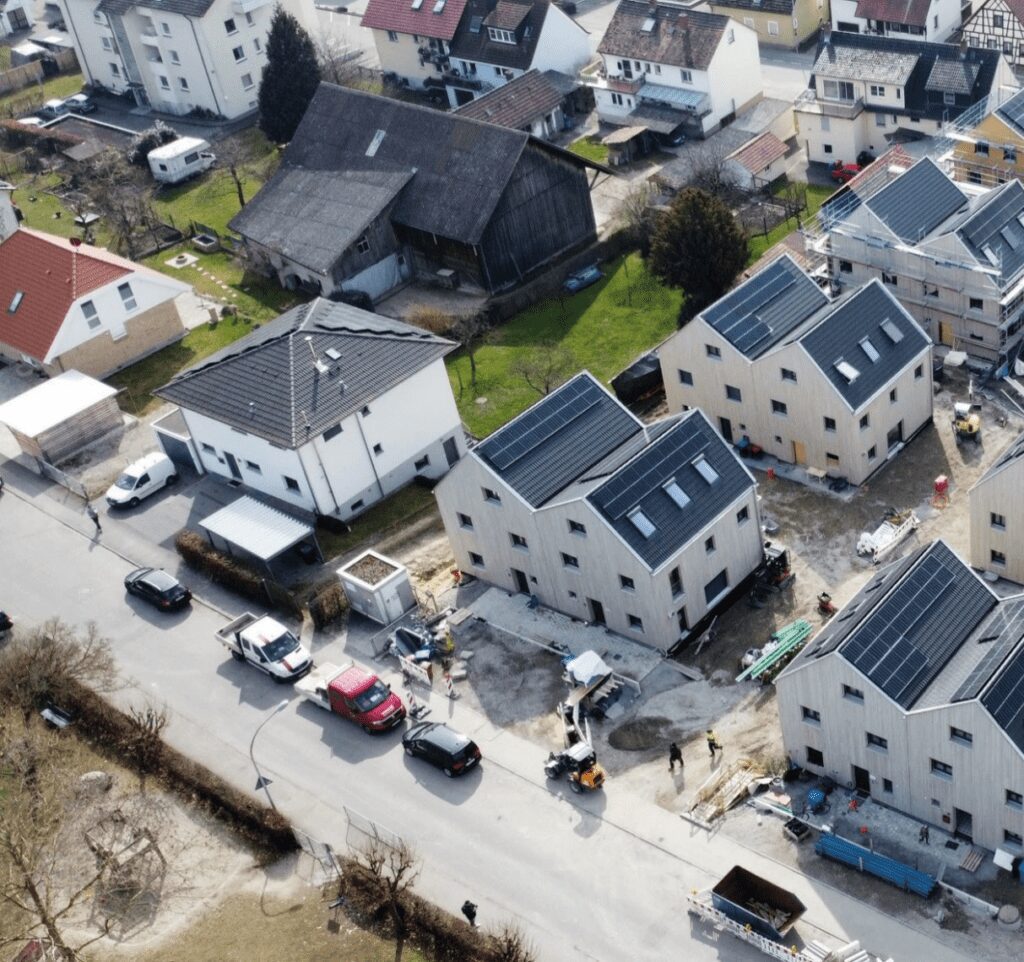Our energy system has evolved over more than a century to support the development of society and industrial productivity – based on fossil fuels. The resulting climate crisis created urgency and a strong ambition to move away from coal, oil, and natural gas. A successful transformation to renewables requires three major technological advancements: First, renewable energy sources in sufficient quantity and at competitive cost. With the progress in the previous decades on PV and wind generation, the technology is available – even if the non-technical challenge remains to ramp up installation quickly. This leaves two other technical challenges to be solved: affordable energy storage to compensate for the intermittent generation from sun and wind, and energy management able to efficiently operate renewables-dominated energy systems. This article focuses on these two challenges and how emerging solutions enable a faster transformation to an energy supply that is sustainable both economically and environmentally
Staying with outdated paradigms leads to inefficiency
Electric energy supply and demand always must match as electric grids cannot absorb imbalances. Conventional wisdom suggests that the generation side is actively controlled to achieve this. Historically this made sense as this could be achieved with few fossil-powered thermal plants. When solar and wind generation emerged, they had to subordinate to this principle. However, as these renewable sources produce depending on external factors, batteries were still added to be able to provide controllable output. Where energy flexibility was found on the “wrong” side (the consumption rather than generation side), the sign was changed to integrate them in the “right” side into a “virtual power plant” (because, from a grid-perspective, generation can be increased by reducing load). Currently, the concept of “green” hydrogen is becoming popular: hydrogen is produced from renewable sources, can be stored in chemical form, and can be burnt flexibly – according to the paradigm of the past. Unfortunately, only few people seem to realize that all three concepts are highly inefficient and cause much higher system costs than necessary: Batteries exhibit very high capital cost and need rare materials. Virtual power plants cause high contractual complexity which makes them infeasible for installations below 100 kW – the bulk of emerging flexibility when decarbonizing heating and mobility. The “green” hydrogen conversion cycle causes high thermal losses and outputs much more heat than desired electricity. Obviously, these solutions can economically cover niche applications only, and lower-cost storage technologies are still needed.
Cheap virtual batteries can replace expensive physical ones
As PV and wind plants produce electric energy, they help decarbonize the electric energy system. Today, it becomes clearer that fossil energy is not only burnt to produce electricity, but also to heat homes and move vehicles: heating and mobility sectors also must be decarbonized. In Germany, heating, and mobility each account for roughly onethird of primary energy use and GHG emissions. Once these sectors are electrified with heat pumps for thermal comfort and electric vehicles for mobility, they can also supply substantial flexibility to the electricity sector: Continuous comfort can be achieved by storing electric energy for 24/7 operation of heat pumps. However, the same comfort is achieved by hot water tanks storing the output of heat pumps that is varying according

to energy availability. The effect of such thermal storage on the electric energy system is equivalent to a battery and can be called a “virtual battery”. For applications where final energy use is thermal (such as heating homes), Prof. Brian Vad Mathiesen estimates that energy storage cost can be reduced by a factor of up to 100 [1]. Similar “virtual batteries” are provided by a temporal shifting of EV charging (at zero physical cost) and even flexible operation of household appliances.
With a holistic view on energy systems, many such opportunities to reduce storage cost can be found. This positively answers the second technical challenge: Yes, huge potential for low-cost energy storage exists, can be used to reduce the required (physical) battery capacity and thus total system cost. Heat pumps and EV charging will be pioneers and game changers in this transformation: they are major energy consumers, can provide load shifting over several hours, are being scaled up now and, in many cases, could not be connected to the grid in the first place unless operated flexibly.
Once suitable ways are found to harvest their storage potential, these can also be applied to many other forms of energy-flexible processes, from dishwashers and hydraulic pumps to any flexible energy consuming process in households, business, and industry.

Innovative energy management for demand side flexibility
One common feature of all energy uses described above differentiates them from traditional electric power plants or batteries: their prime purpose is not to serve the electric energy system, but to heat homes, move people or provide other services such as cleaning dishes. Any role they might have in the electric energy system is an additional, secondary function and must not negatively affect their prime purpose. Traditional energy management systems have not been designed for this situation. Future energy management systems must be able to integrate the flexibility of this novel type and stimulate reactions, yet also tolerate if the primary purpose prevents the desired reactions. They also must be efficient enough to ensure that the value created exceeds the cost of its creation.
Swarm intelligence realized by markets and dynamic tariffs
Traditional control and central planning were suitable in situations with few actors and changes over time. They reach their natural limits as the number of actors and their dynamics grow, which are the situations where decentral mechanisms and swarm behaviour show their strengths. How can the latter be created in energy systems?
In a renewables-based system, energy availability follows the patterns of sun and wind over time and location. These patterns should be reflected in changing prices for energy. The recently published “2035 Power System Blueprint” by the Regulatory Assistance Project [2] demands to “make prices reflect system conditions”.
However, today’s energy prices only reflect the results of expectations, not of physical reality. Even though the EU requires the introduction of “dynamic end customer tariffs” in its Clean Energy Package, not much progress has been made in this respect. One of the reasons for this is the unavailability of suitable technology.

Effective dynamic tariffs need smarter information and communication technology
Dynamic tariffs should stimulate reactions, and ideally fully automated reactions: As Fig 1 shows, it is not very practical if customers must observe price developments and several other conditions to decide when to charge their EV. A software agent can and should do this for them, based on a given user’s constraints such as a time window for the task. To avoid thousands of EV charging processes starting simultaneously when prices drop, which could negatively affect the grid, the creation of and reaction to prices must occur in real-time (current markets do not operate in real-time). It also must reflect energy system dynamics, requiring price update rates to be much faster than the 15-60 minutes used in most European energy markets. Another important requirement is the resilience of the ICT, as erroneous behaviour of thousands of devices could endanger electric grid stability. As failures or hacker’s attacks could impair their performance, solutions based on traditional IT, internet, big data and cloud cannot be employed at scale.
Software agents earn money for their owners and support the energy system
Fortunately, in 2015 a technology innovation was published [3] that meets these technical requirements. It is based on the insight that electric grids already express their current situation and thus needs by their physical state. It is only necessary Dr.-Ing. Thomas Walter to translate these expressions (parameters like voltage, power, or frequency) into a language that grid users or their devices can understand. Energy availability – expressed as grid frequency or energy flow – is thus translated into a dynamic energy tariff. Software agents of flexible devices such as heat pumps or EV chargers enable load-shifting reactions to them, with the objective of minimizing energy costs. These not only maximize their owner’s benefit, but also provide grid support by absorbing excess energy or reducing load when energy is scarce.
Efficient and stable decentral energy management
Fig. 2 shows a setting where a – principally unlimited – number of energy producers and consumers in an area adapt their behaviour to energy price changes: for the EV-charging example mentioned before, its software agent would aim to charge when energy is cheapest within the given time window. The dynamic tariff can be updated constantly: if energy export is detected, obviously the price is too high (as it stimulates too much production and too little consumption) and will be reduced in the next instant, and vice versa. Because actual grid states are used, there is no information latency that could cause control loop instability, and hacker attacks on IT systems are not able to manipulate such a physical system.
Compare this innovation – a price created by one measurement enabling a swarm of devices to create benefits for themselves and the system – with the legacy system! All participants must issue bids, which are collected and interpreted before a price and schedule are sent back. Procedures are established to detect and punish incorrect supply or consumption schedule deviations. And this only deals with expectations for the future, such that a second mechanism (called control power) is needed to handle the deviations between reality and predictions!
New challenges are opportunities to convert innovations into reality
A community that wished to move ahead by reducing its carbon footprint provided the stimulus to move these innovations from theoretical opportunity to practical proof. In the demo project SoLAR Allensbach (Fig. 3) virtual batteries, a local energy market with a dynamic tariff, and devices with automated demand response have been implemented [4]. The coordinated operation of heat pumps, a combined heat and power plant, EV charging points and appliances such as dishwashers and washing machines (~100 flexible devices in total) substantially increases selfconsumption in the community. Intelligent flexible operation thus replaces real batteries that would otherwise be needed to achieve the same effect. An independent assessment by the international Renewables Grid Initiative (where large grid operators and environmental NGOs co-operate to make the energy system more sustainable) selected this demo for their “Good Practice Award 2021” [5]. Research done so far supports the expectation that low-cost virtual batteries and system-supportive real-time tariffs

can be scaled well beyond the small quarter where they were demonstrated. New partners are invited to apply this innovation to larger settlements, commercial and industrial applications, as well as distribution grid level.
This should help create the basis for highly efficient and sustainable energy systems that support future industrial competitiveness as well as social and economic growth.
[An earlier version of this article in German has been published in April 2022 in “Energiewirtschaftliche Tagesfragen”. ]
References
1.Prof. Brian Vad Mathiesen/Uni Aalborg at KEA BW Karlsruhe (22.10.2020, page 17): https:// www.kea-bw.de/fileadmin/ user_upload/Veranstaltungen/ eigen/Nahw%C3%A4rme_ kompakt_2020/20201022_NK_ alleVortr%C3%A4ge_final.pdf
2.Presentation of 2035 Power System Blueprint by the Regulatory Assistance Project https://blueprint. raponline.org/
3.METHOD FOR CONTROLLING THE RATIO BETWEEN SUPPLIEDAND DRAWN ELECTRIC ENERGY IN AN ELECTRIC ENERGY SUPPLY NETWORK, European Patent EP 2 875 560 B1, Publication date 27.05.2015
4.Project homepage SoLAR Allensbach https://solarlago.de/ solar-allensbach/english-summary/
5.Award brochure 2021 Renewables Grid Initiative https://renewablesgrid.eu/fileadmin/user_upload/RGI_ Award-2021_web_compressed.pdf
























